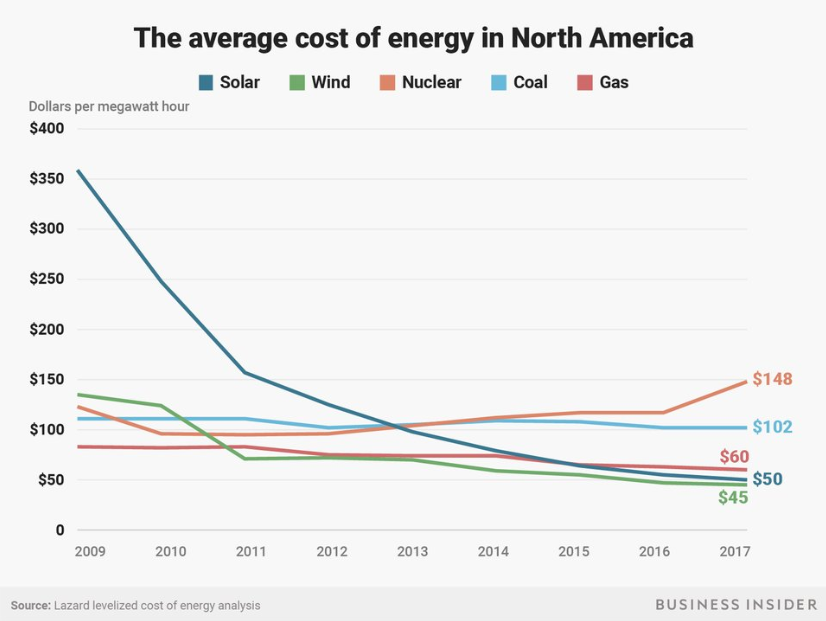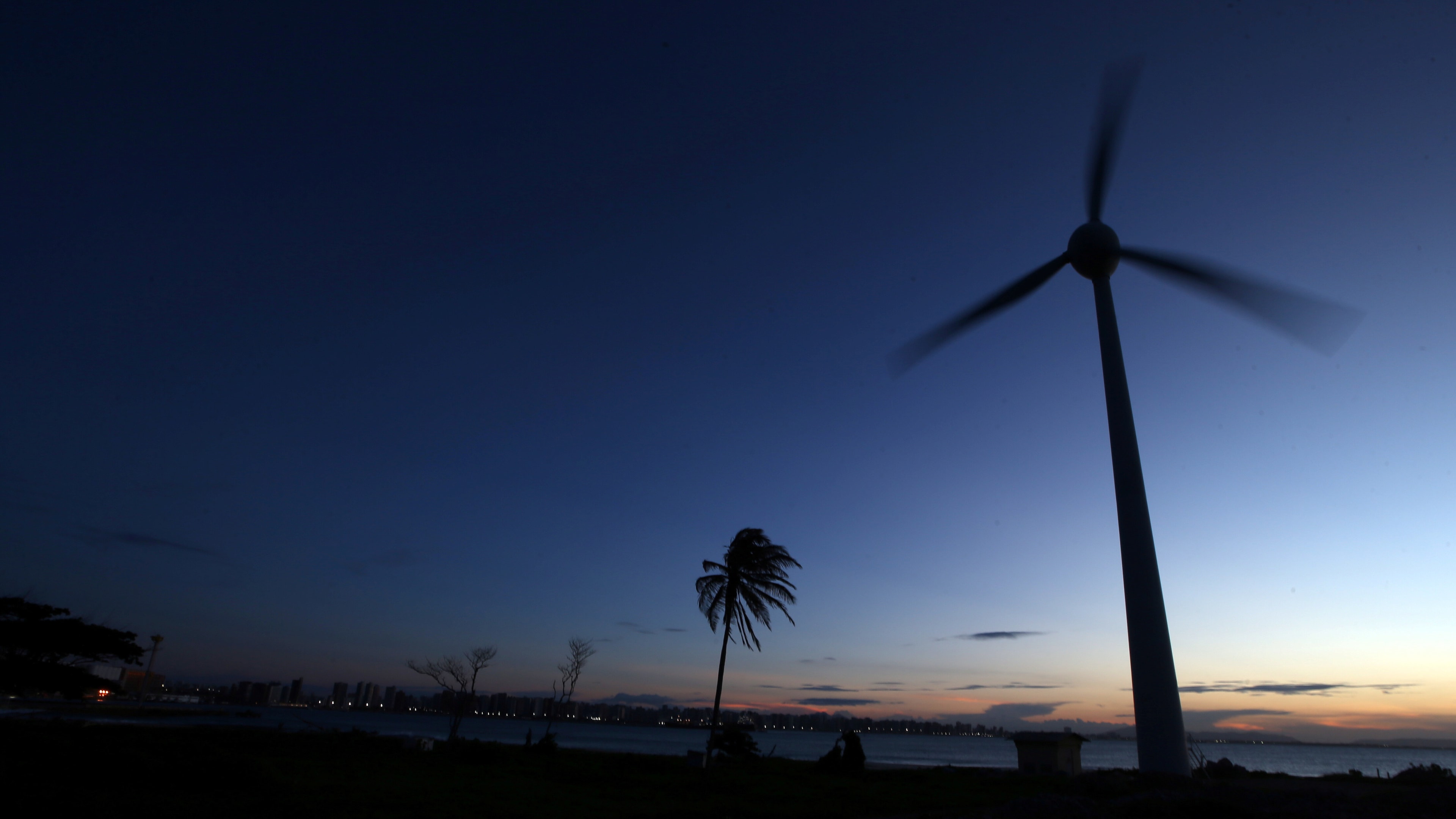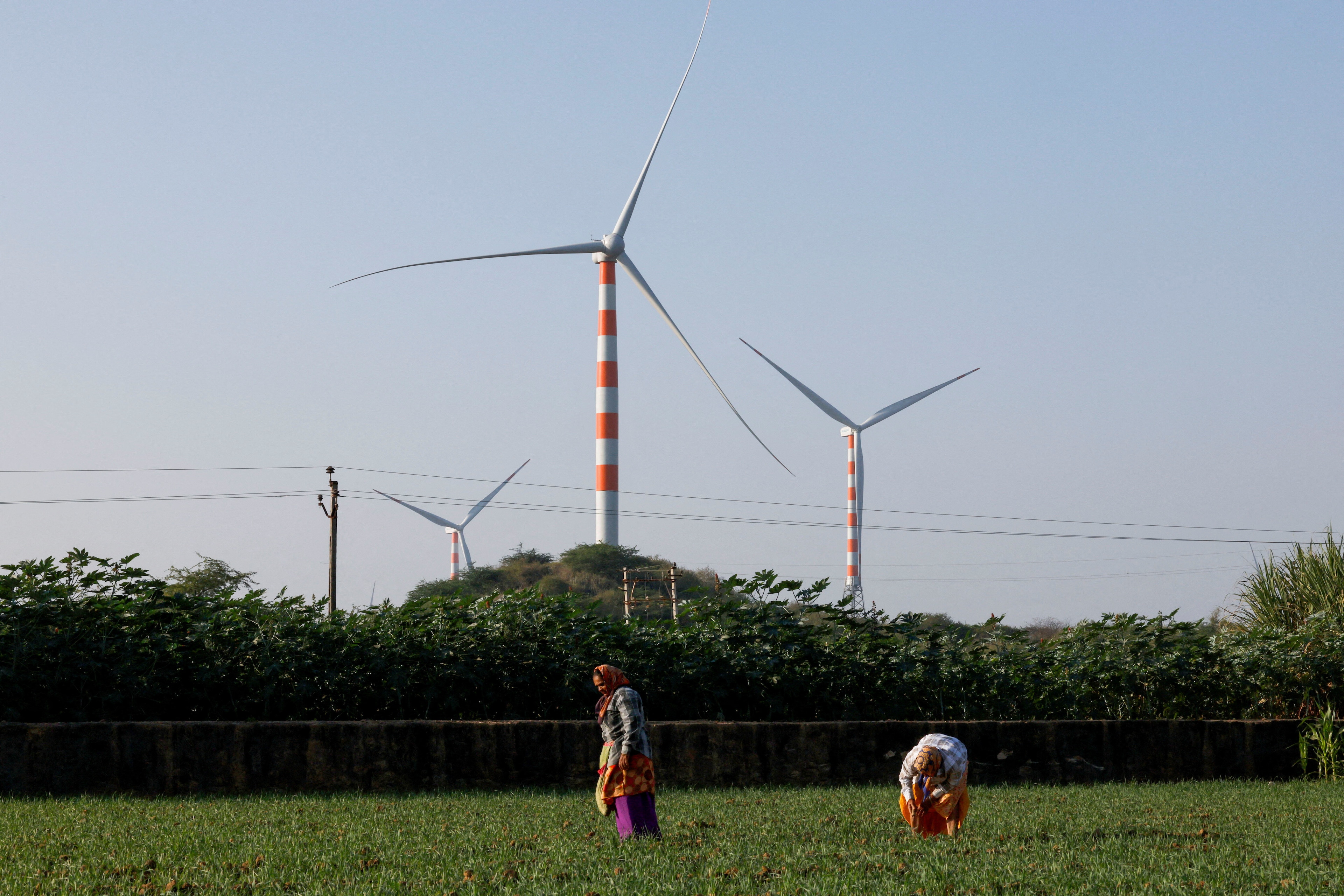The cost of renewable energy is declining and it's going to change everything

The cost of renewable energy is declining so rapidly, it is getting cheaper than fossils
Image: REUTERS/Alvin Baez
Stay up to date:
Decarbonizing Energy
The cost of renewable energy, especially solar is decreasing so rapidly, it's now cheaper than coal, based on a new analysis.
A recent report from Lazard shows how the costs of producing electricity from various sources are changing. Energy from utility-scale solar plants — plants that produce electricity that feeds into the grid — has seen the biggest price drop: an 86% decrease since 2009.
The cost of producing one megawatt-hour of electricity — a standard way to measure electricity production — is now around $50 for solar power, according to Lazard's math. The cost of producing one megawatt-hour of electricity from coal, by comparison, is $102 — more than double the cost of solar.
The dramatic change in the cost of renewable energy is clear in this chart:

Lazard's analysis is based on a measurement known as the Levelized Cost of Energy Analysis (LCOE), which is a way of calculating the total production cost of building and operating an electricity-generating plant.
What does the declining cost of renewable energy mean?
The rapidly declining cost of renewable energy, specifically solar, is a sign that the world may be on the verge of a dramatic change in how we power our buildings and vehicles. The price drop is likely to spur a shift toward renewable power sources like wind and solar and away from fossil fuels like oil and coal.
Changing our energy system to emphasize those clean sources is the only way to slow the process of climate change since emissions from fossil fuels cause more heat to get trapped on the planet. But analysts have long pointed out the transition will only realistically ramp up once the cost of renewable energy becomes cheaper than traditional fuels — which now seems to be happening.
The rise of renewables is apparent when you look at which types of new energy generation capacity are getting added around the world. In 2017, there was more new solar power capacity created than any other type of energy, according to a report from the United Nations Environment Programme.

Renewable energy, including wind, hydro, and solar, supplied a record 12% of the world's energy needs last year. In 2017 alone, the solar sector attracted $160.8 billion in investment, an 18% increase over 2016, according to the UNEP report.
How to further reduce the cost of renewable energy?
While solar is getting much cheaper, Lazard notes that these sources of electricity are not a panacea. LCOE as a measurement does not take into account some external costs, like storing solar power for cloudy days, which is one of the lingering obstacles preventing the widespread adoption of solar. (Other sources of electricity like coal or natural gas don't have the same problem, of course.)
That storage problem also makes it hard for developing economies to adopt energy systems that are fully renewable. Until battery and storage capabilities improve, the report says, countries will likely need to use a mix of traditional energy sources along with renewables.
In the US, solar still only provides 2% of the country's total electricity needs, according to the Solar Energy Industries Association. But California is trying to change that: The state is seeking to mandate that most new homes be outfitted with solar panels, and make the most of the lower cost of renewable energy. State lawmakers are scheduled to vote on the proposal on Wednesday.
Don't miss any update on this topic
Create a free account and access your personalized content collection with our latest publications and analyses.
License and Republishing
World Economic Forum articles may be republished in accordance with the Creative Commons Attribution-NonCommercial-NoDerivatives 4.0 International Public License, and in accordance with our Terms of Use.
The views expressed in this article are those of the author alone and not the World Economic Forum.
Forum Stories newsletter
Bringing you weekly curated insights and analysis on the global issues that matter.
More on Energy TransitionSee all
Charles Bourgault and Sarah Moin
August 19, 2025
Jürgen Karl Zattler and Adrian Severin Schmieg
August 18, 2025
Piyush Verma
August 18, 2025
Valentin Chomel and Jacques-Alexis Verrecchia
August 14, 2025
Gaurav Upadhyay and Labanya Prakash Jena
August 8, 2025
David Timis
August 8, 2025





